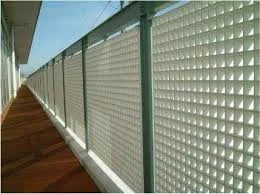
-
 Afrikaans
Afrikaans -
 Albanian
Albanian -
 Amharic
Amharic -
 Arabic
Arabic -
 Armenian
Armenian -
 Azerbaijani
Azerbaijani -
 Basque
Basque -
 Belarusian
Belarusian -
 Bengali
Bengali -
 Bosnian
Bosnian -
 Bulgarian
Bulgarian -
 Catalan
Catalan -
 Cebuano
Cebuano -
 China
China -
 China (Taiwan)
China (Taiwan) -
 Corsican
Corsican -
 Croatian
Croatian -
 Czech
Czech -
 Danish
Danish -
 Dutch
Dutch -
 English
English -
 Esperanto
Esperanto -
 Estonian
Estonian -
 Finnish
Finnish -
 French
French -
 Frisian
Frisian -
 Galician
Galician -
 Georgian
Georgian -
 German
German -
 Greek
Greek -
 Gujarati
Gujarati -
 Haitian Creole
Haitian Creole -
 hausa
hausa -
 hawaiian
hawaiian -
 Hebrew
Hebrew -
 Hindi
Hindi -
 Miao
Miao -
 Hungarian
Hungarian -
 Icelandic
Icelandic -
 igbo
igbo -
 Indonesian
Indonesian -
 irish
irish -
 Italian
Italian -
 Japanese
Japanese -
 Javanese
Javanese -
 Kannada
Kannada -
 kazakh
kazakh -
 Khmer
Khmer -
 Rwandese
Rwandese -
 Korean
Korean -
 Kurdish
Kurdish -
 Kyrgyz
Kyrgyz -
 Lao
Lao -
 Latin
Latin -
 Latvian
Latvian -
 Lithuanian
Lithuanian -
 Luxembourgish
Luxembourgish -
 Macedonian
Macedonian -
 Malgashi
Malgashi -
 Malay
Malay -
 Malayalam
Malayalam -
 Maltese
Maltese -
 Maori
Maori -
 Marathi
Marathi -
 Mongolian
Mongolian -
 Myanmar
Myanmar -
 Nepali
Nepali -
 Norwegian
Norwegian -
 Norwegian
Norwegian -
 Occitan
Occitan -
 Pashto
Pashto -
 Persian
Persian -
 Polish
Polish -
 Portuguese
Portuguese -
 Punjabi
Punjabi -
 Romanian
Romanian -
 Russian
Russian -
 Samoan
Samoan -
 Scottish Gaelic
Scottish Gaelic -
 Serbian
Serbian -
 Sesotho
Sesotho -
 Shona
Shona -
 Sindhi
Sindhi -
 Sinhala
Sinhala -
 Slovak
Slovak -
 Slovenian
Slovenian -
 Somali
Somali -
 Spanish
Spanish -
 Sundanese
Sundanese -
 Swahili
Swahili -
 Swedish
Swedish -
 Tagalog
Tagalog -
 Tajik
Tajik -
 Tamil
Tamil -
 Tatar
Tatar -
 Telugu
Telugu -
 Thai
Thai -
 Turkish
Turkish -
 Turkmen
Turkmen -
 Ukrainian
Ukrainian -
 Urdu
Urdu -
 Uighur
Uighur -
 Uzbek
Uzbek -
 Vietnamese
Vietnamese -
 Welsh
Welsh -
 Bantu
Bantu -
 Yiddish
Yiddish -
 Yoruba
Yoruba -
 Zulu
Zulu
grp tank
Exploring the GRP Tank A Comprehensive Overview
Glass Reinforced Plastic (GRP) tanks are becoming increasingly popular across various industries due to their durability, resistance to corrosion, and lightweight properties. These tanks are a perfect solution for storing a wide range of liquids, including water, chemicals, and even food-grade substances. In this article, we will explore the features, benefits, and applications of GRP tanks, highlighting why they are a preferred choice for many.
One of the critical advantages of GRP tanks is their exceptional resistance to corrosion. Unlike traditional metal tanks that can succumb to rust and deterioration over time, GRP tanks are designed to withstand harsh environments and aggressive chemicals. This property significantly extends their lifespan, making them a cost-effective solution for long-term storage needs. Additionally, GRP materials are not susceptible to biological growth, which is particularly important for storing water and other sensitive liquids.
Exploring the GRP Tank A Comprehensive Overview
GRP tanks are also customizable, allowing manufacturers to tailor them to specific needs. They can be molded into various shapes, sizes, and capacities, making them suitable for a wide array of applications. Whether it’s a small tank for irrigation purposes or large-scale storage for industrial processes, GRP tanks can meet diverse requirements effectively.
grp tank

Moreover, the installation process of GRP tanks is relatively straightforward, often leading to reduced labor costs and quicker deployment timelines. The adaptability of GRP tanks ensures they can be integrated seamlessly into existing systems, whether it involves new construction or retrofitting.
In terms of maintenance, GRP tanks require minimal upkeep. Their non-corrosive properties mean that regular inspections for rust or erosion are less frequent, further enhancing their efficiency and reliability. This factor is particularly appealing to industries that aim to minimize downtime and reduce maintenance costs.
With environmental concerns on the rise, GRP tanks present an eco-friendly option. They can be manufactured with recyclable materials, contributing to sustainable practices. Furthermore, their longevity and efficiency align with the principles of reducing waste and promoting responsible resource management.
In conclusion, GRP tanks represent a versatile and efficient choice for various storage needs. Their unparalleled resistance to corrosion, lightweight properties, customizability, and low maintenance requirements make them ideal for industries ranging from agriculture to petrochemicals. As technology continues to evolve, the use of GRP tanks will likely expand, further cementing their place as a preferred storage solution in an ever-changing world.
Latest news
-
Exploring the Benefits of Top Hammer Drifter Rods for Enhanced Drilling PerformanceNewsJun.10,2025
-
High-Precision Fiberglass Winding Machine for GRP/FRP Pipe Production – Reliable & Efficient SolutionsNewsJun.10,2025
-
FRP Pipes & Fittings for Shipbuilding - Corrosion-Resistant & LightweightNewsJun.09,2025
-
Premium FRP Flooring Solutions Durable & Slip-ResistantNewsJun.09,2025
-
Premium Fiberglass Rectangular Tanks Durable & Lightweight SolutionNewsJun.09,2025
-
Tapered Drill String Design Guide Durable Performance & UsesNewsJun.09,2025









